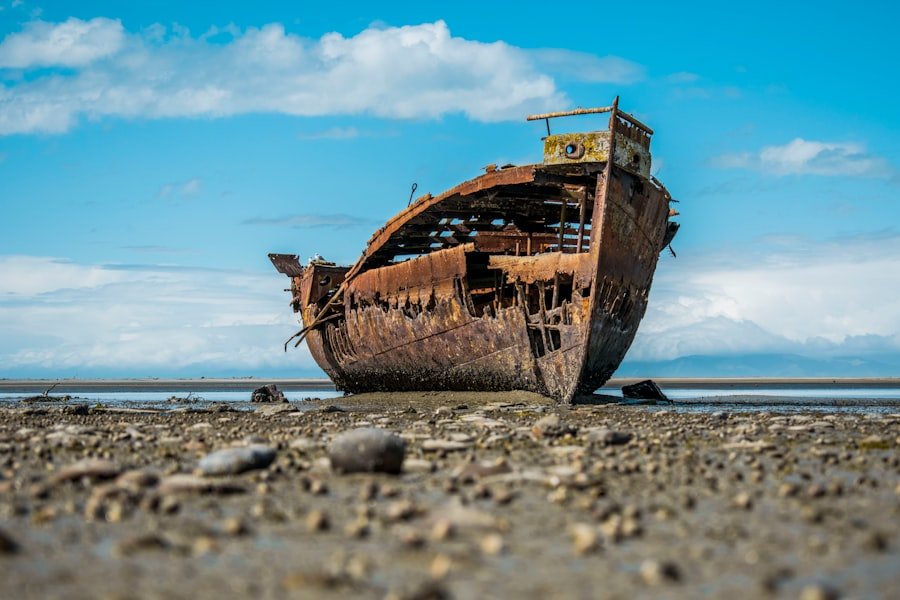The Oslo Viking Ship Museum is a renowned museum located in Oslo, Norway. It is dedicated to preserving and showcasing the rich history and culture of the Vikings, particularly through its collection of Viking ships. The museum is home to three well-preserved Viking ships, which are considered to be some of the most important archaeological finds in Norway. These ships provide valuable insights into the seafaring abilities and craftsmanship of the Vikings.
Introduction to Nordic Ancient Culture
Nordic ancient culture refers to the customs, traditions, and way of life of the people who lived in the Nordic region during ancient times. This region includes present-day Norway, Sweden, Denmark, Finland, and Iceland. The Vikings were a prominent group within this culture, known for their seafaring skills, exploration, and raiding activities.
The Viking era, which lasted from the late 8th century to the early 11th century, was a significant period in Nordic ancient culture. During this time, the Vikings embarked on voyages of exploration and conquest, establishing trade routes and settlements across Europe and beyond. They were skilled navigators and shipbuilders, using their ships to travel long distances and explore new lands.
Historical Background of Viking Ships
Viking ships played a crucial role in the Viking era. These ships were not only used for transportation but also for warfare and trade. The Vikings were skilled shipbuilders and their ships were designed to be fast, maneuverable, and capable of navigating both open seas and shallow rivers.
The history of Viking ships can be traced back to the early Iron Age in Scandinavia. The earliest known Viking ship is the Hjortspring boat, which dates back to around 400 BC. Over time, the design and construction techniques of Viking ships evolved, resulting in different types of ships with varying sizes and purposes.
Types and Uses of Viking Ships
There were several types of Viking ships, each with its own specific purpose. The most well-known type is the longship, which was used for both warfare and exploration. Longships were sleek and narrow, allowing them to navigate through narrow rivers and shallow waters. They were also equipped with oars and sails, giving them the flexibility to travel in various conditions.
Another type of Viking ship is the knarr, which was primarily used for trade and transportation. Knarrs were larger and broader than longships, allowing them to carry more cargo. They were sturdy and reliable, making them ideal for long-distance voyages.
Viking ships were also used for burial rituals. The deceased would be placed in a ship along with their belongings and buried in a mound or ship grave. These burial ships were often richly decorated and served as a symbol of the deceased’s status and wealth.
Manufacturing Techniques and Materials of Viking Ships
The construction of Viking ships required skilled craftsmanship and knowledge of various manufacturing techniques. The Vikings used a combination of woodworking and metalworking techniques to build their ships.
The hull of a Viking ship was typically made from overlapping planks, which were fastened together using iron rivets or wooden pegs. This technique, known as clinker-built construction, resulted in a strong and flexible hull that could withstand the rigors of the sea.
The Vikings also used tar to waterproof their ships. They would heat tar until it became liquid and then apply it to the seams between the planks. This helped to seal the gaps and prevent water from seeping into the ship.
Navigation and Sailing Techniques of Viking Ships

The Vikings were skilled navigators and sailors, relying on a combination of celestial navigation, landmarks, and natural phenomena to navigate their ships. They used tools such as sunstones, which allowed them to determine the position of the sun even when it was obscured by clouds or fog.
The Vikings also relied on their knowledge of the stars and constellations to navigate at night. They were able to determine their latitude by measuring the angle between the North Star and the horizon.
In addition to celestial navigation, the Vikings also used landmarks and natural phenomena to navigate. They would look for familiar landmarks such as mountains or distinctive rock formations to help them determine their position. They would also observe the behavior of birds, fish, and other marine animals, as these could indicate the presence of land or changes in weather conditions.
Life and Cultural Customs of the Vikings
The daily life of the Vikings was centered around agriculture, fishing, and trade. They were skilled farmers, growing crops such as barley, oats, and rye. They also raised livestock, including cattle, sheep, and pigs.
Fishing was another important activity for the Vikings, who relied on the sea for food and resources. They would use nets, traps, and hooks to catch fish, as well as harpoons and spears for hunting seals and whales.
The Vikings were also skilled traders, establishing trade routes that stretched from Scandinavia to the Mediterranean and beyond. They traded a variety of goods, including furs, timber, iron, and slaves.
In terms of cultural customs, the Vikings had a strong oral tradition. They passed down their history, myths, and legends through storytelling and poetry. They also had a complex system of laws and justice, with disputes often being settled through a process known as the Thing.
Viking Warfare and Raiding Activities
The Vikings were known for their military prowess and raiding activities. They would launch surprise attacks on coastal towns and monasteries, looting treasures and taking captives. These raids were not only motivated by a desire for wealth but also by a thirst for adventure and glory.
The Vikings were skilled warriors who used a combination of weapons such as swords, axes, spears, and bows. They were also skilled in the art of siege warfare, using battering rams and siege towers to breach fortified walls.
In addition to their raiding activities, the Vikings also engaged in organized warfare. They would form armies and engage in battles with rival groups or kingdoms. These battles were often brutal and bloody, with the Vikings using tactics such as shield walls and feigned retreats to gain the upper hand.
Artistic and Literary Achievements of the Vikings
The Vikings were not only skilled warriors but also accomplished artists and craftsmen. They produced intricate metalwork, including jewelry, weapons, and household items. They also excelled in woodcarving, producing elaborate wooden sculptures and carvings.
The Vikings were also skilled shipbuilders, as evidenced by their well-preserved ships. These ships were not only functional but also highly decorated, with intricate carvings and paintings adorning their hulls.
In terms of literature, the Vikings had a rich tradition of storytelling and poetry. They composed epic poems known as sagas, which recounted the heroic deeds of legendary figures such as Odin, Thor, and Loki. These sagas were passed down orally from generation to generation before being written down in the 13th century.
The Influence of Viking Culture in Modern Times
The influence of Viking culture can still be seen in modern times. The Vikings have left a lasting impact on various aspects of modern society, including language, law, art, and literature.
Many words in the English language have their roots in Old Norse, the language spoken by the Vikings. Words such as “sky,” “window,” and “law” are all derived from Old Norse.
The Vikings also had a significant influence on the development of common law. Their system of laws and justice, known as the Thing, laid the foundation for modern legal systems.
In terms of art and literature, the Vikings continue to inspire artists and writers today. Their myths and legends have been adapted into numerous books, movies, and TV shows, capturing the imagination of audiences around the world.
In conclusion, the Oslo Viking Ship Museum provides a fascinating glimpse into the rich history and culture of the Vikings. The museum’s collection of well-preserved Viking ships is a testament to the seafaring abilities and craftsmanship of the Vikings. Through these ships, we can learn about the types and uses of Viking ships, as well as the manufacturing techniques and materials used in their construction.
The Vikings were skilled navigators and sailors, relying on a combination of celestial navigation, landmarks, and natural phenomena to navigate their ships. They were also skilled warriors, known for their raiding activities and military tactics. In addition to their military prowess, the Vikings were accomplished artists and craftsmen, leaving behind a legacy of intricate metalwork, woodcarvings, and epic sagas.
The influence of Viking culture can still be seen in modern times, with their language, law, art, and literature continuing to inspire and captivate audiences around the world. The Oslo Viking Ship Museum serves as a reminder of the importance of preserving and celebrating this rich cultural heritage.
在挪威奥斯陆的维京船博物馆是一处令人惊叹的旅游景点。如果你对挪威历史和文化感兴趣,你可能会对以下相关文章感兴趣:挪威语时间和日期词汇表达、

